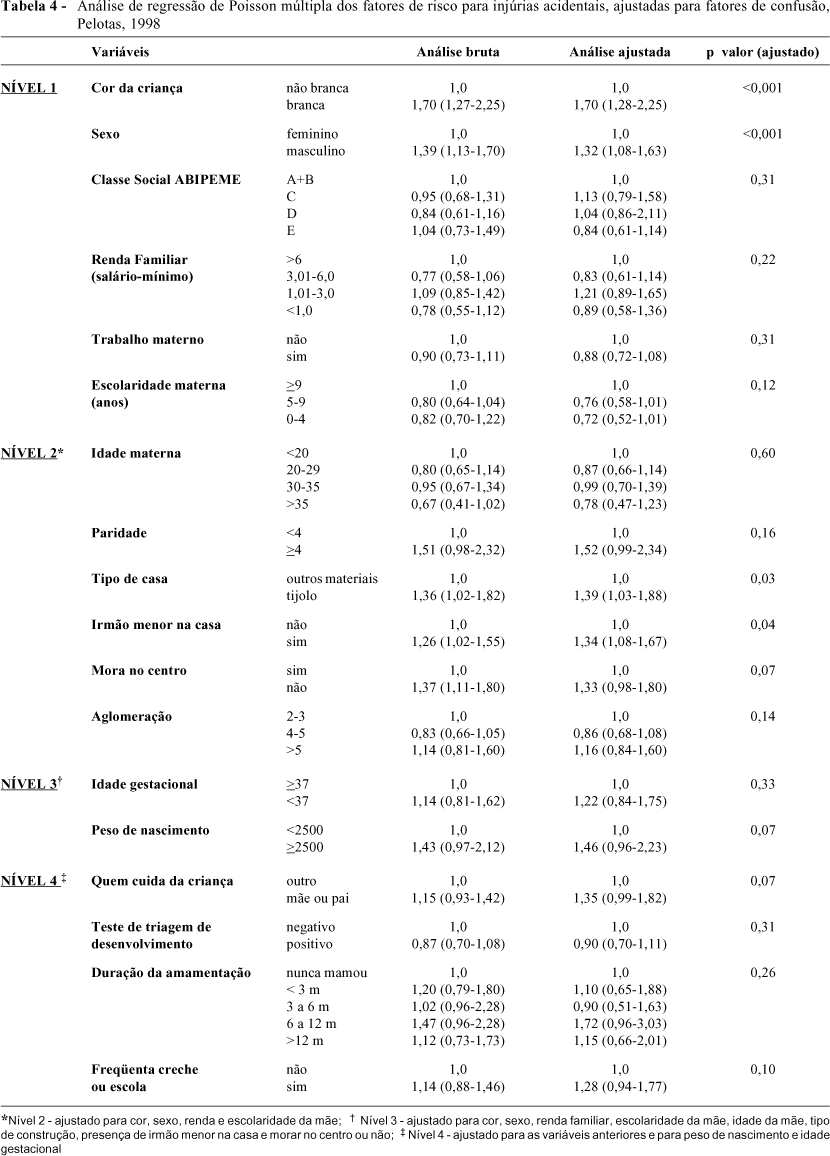Objective: to measure the main risk factors associated with the occurrence of accidental injuries in children aged 4-5 years.Methods: the study included a prospective cohort of children whose parents filled in a diary recording accidents and injuries during a period of one-month. The children represented a systematic subsample from a population-based birth cohort in southern Brazil. The outcome was the number of reported injuries per child during one month. Multivariate analysis (Poisson regression) was used to assess confounding factors.Results: the monthly frequency of accidents was 53.8%, and 48.4% of the children suffered at least one injury. Boys had 30% more injuries than girls, and white children had 70% higher incidence than non-white. Family income, parental education and maternal employment were not associated with the frequency of injuries. After adjustment of socioeconomic and environmental factors, having younger siblings was associated with a 30% higher injury rate, and living in a home made of bricks was associated with a 35% increase. The incidence of injuries appeared to be higher among children attending day-care centers and those living in periurban areas.Conclusions: few risk factors were associated with an increased frequency of injuries. Among them, the most amenable to intervention seems to be the presence of younger siblings. Parents should become aware of children’s needs for increased attention when a younger sibling is born.
accidents; injury; injury prevention; risk factors





